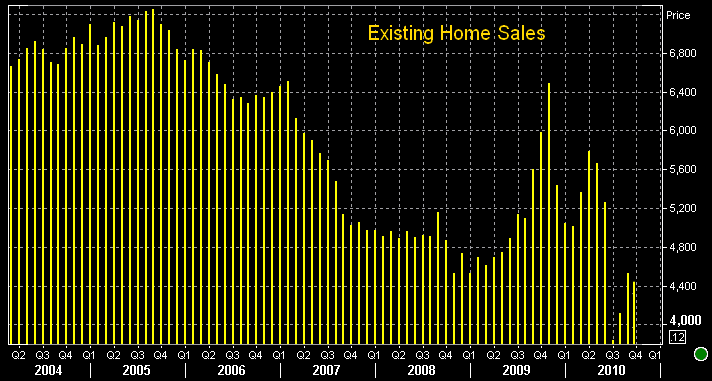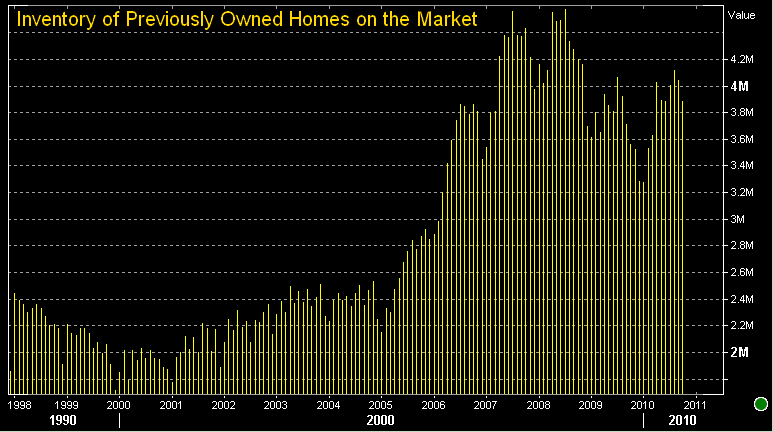The National Association of Realtors today released Existing Home Sales data for October 2010
HERE is the methodology for the data collection
Excerpts from the release...
SALES
Following two months of gains, Existing Home Sales Decline in October, casting doubt on the notion that the previous two months of gains constituted the infancy of a sales recovery.
Existing Home Sales, which are completed transactions that include single-family, townhomes, condominiums, and co-ops, fell 2.2 percent to a seasonally adjusted annual rate of 4.43 million in October from 4.53 million in September, and are 25.9 percent below the 5.98 million-unit level in October 2009 when sales were surging prior to the initial deadline for the first-time buyer tax credit.

Lawrence Yun, NAR chief economist, said the recent sales pattern can be expected to continue. "The housing market is experiencing an uneven recovery, and a temporary foreclosure stoppage in some states is likely to have held back a number of completed sales. Still, sales activity is clearly off the bottom and is attempting to settle into normal sustainable levels," he said. "Based on current and improving job market conditions, and from attractive affordability conditions, sales should steadily improve to healthier levels of above 5 million by spring of next year."
The national median existing-home price for all housing types was $170,500 in October, down 0.9 percent from October 2009. Distressed homes accounted for 34 percent of sales in October, compared with 35 percent in September and 30 percent of sales in October 2009.

Single-family home sales declined 2.0 percent to a seasonally adjusted annual rate of 3.89 million in October from 3.97 million in September, and are 25.6 percent below the 5.23 million surge in October 2009. The median existing single-family home price was $171,100 in October, which is 0.5 percent below a year ago.

The report also notes data from FHFA suggesting that recently originated GSE mortgages are performing better than loan originated during the pre-housing bubble years. But with this quality seen as the result of perhaps overly-stringent underwriting guidlines, Yun suggests potential untapped demand for future sales should underwriting guidlines ease.
According to Yun, "A review of recently originated loans suggests that they have overly stringent underwriting standards, with only the highest creditworthy borrowers able to tap into historically low mortgage interest rates. There could be an upside surprise to sales activity if credit availability is opened to more qualified home buyers who are willing to stay well within budget."
Despite being well off the record levels from 2007/8 and even down slightly from last month's reading, the inventory of previously owned homes on the market remains deceptively high at just under 4 million units. However, one problem that was not as prevalent in 2007/8 would be the 800 lb "invisible gorilla" in the room otherwise known as SHADOW INVENTORY. By the time that is factored back in, it's hard to see any real positive change in today's report.








